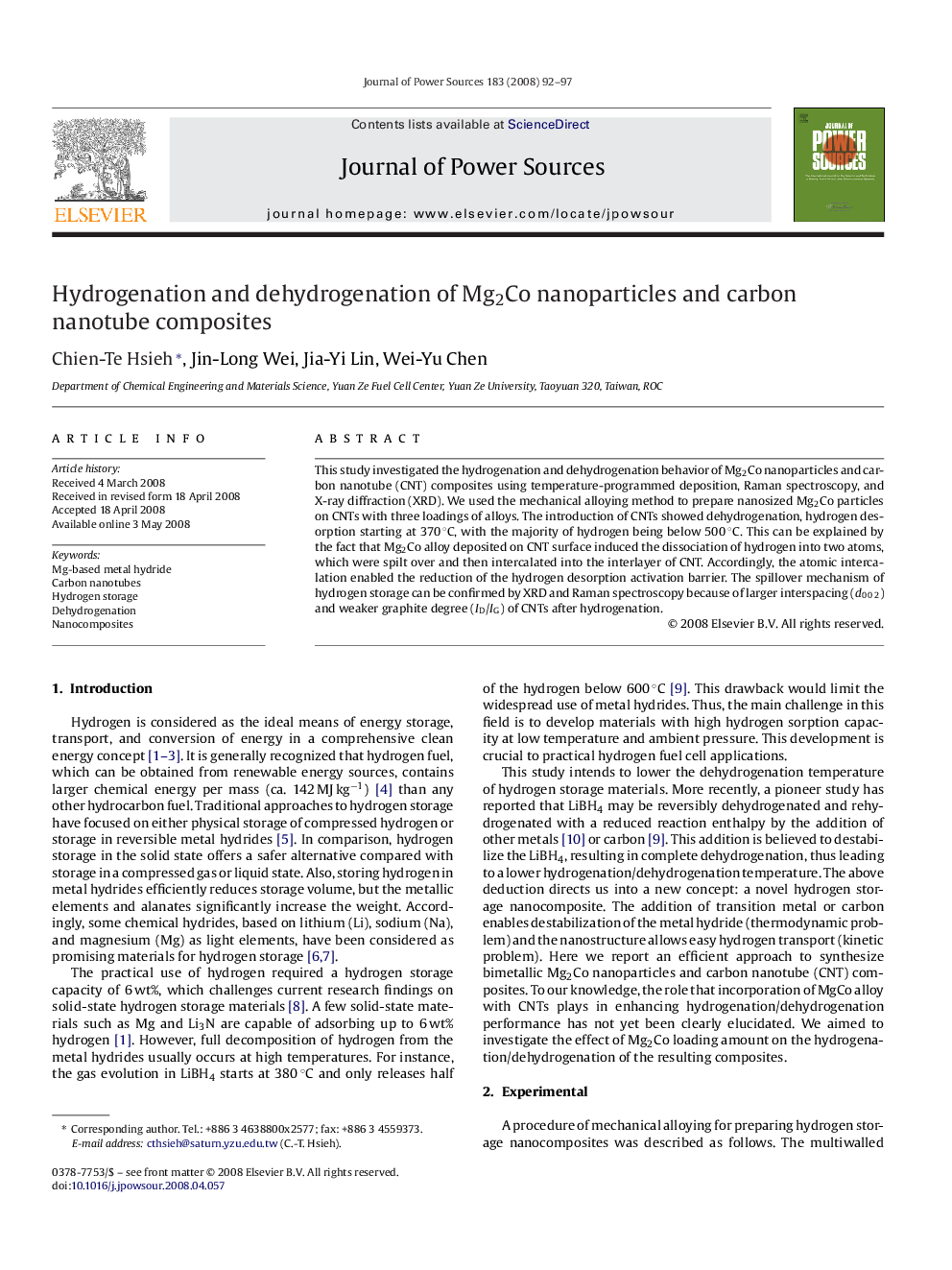| Article ID | Journal | Published Year | Pages | File Type |
|---|---|---|---|---|
| 1285385 | Journal of Power Sources | 2008 | 6 Pages |
This study investigated the hydrogenation and dehydrogenation behavior of Mg2Co nanoparticles and carbon nanotube (CNT) composites using temperature-programmed deposition, Raman spectroscopy, and X-ray diffraction (XRD). We used the mechanical alloying method to prepare nanosized Mg2Co particles on CNTs with three loadings of alloys. The introduction of CNTs showed dehydrogenation, hydrogen desorption starting at 370 °C, with the majority of hydrogen being below 500 °C. This can be explained by the fact that Mg2Co alloy deposited on CNT surface induced the dissociation of hydrogen into two atoms, which were spilt over and then intercalated into the interlayer of CNT. Accordingly, the atomic intercalation enabled the reduction of the hydrogen desorption activation barrier. The spillover mechanism of hydrogen storage can be confirmed by XRD and Raman spectroscopy because of larger interspacing (d0 0 2) and weaker graphite degree (ID/IG) of CNTs after hydrogenation.
